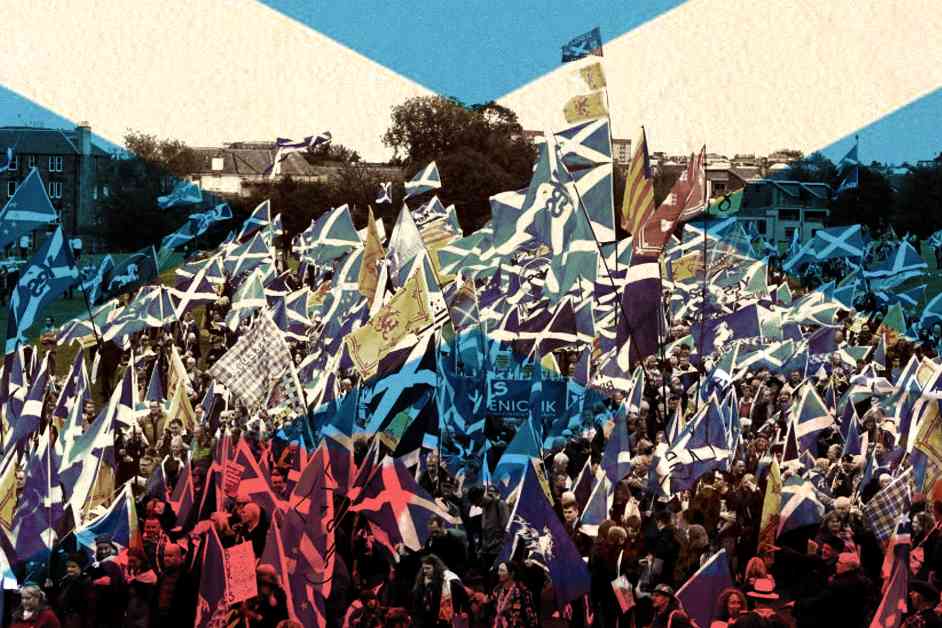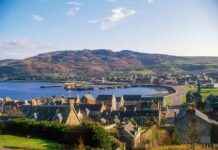Momentum for Scottish Independence Referendum Stalls
As the 10-year anniversary of the historic Scottish independence referendum approaches, Professor Sir John Curtice shares his insights on the current state of the Yes movement. While momentum for a future independence referendum has stalled, he believes that the prospect of a vote is “not dead.” The divisive constitutional issue continues to loom over Scotland, surprising many who did not anticipate the lasting impact of the referendum held in 2014.
One of the key factors contributing to the delay in a second independence referendum, according to Prof Curtice, is the lack of a prominent pro-independence figurehead in recent years. This absence of strong leadership has hindered the movement’s progress and left both sides in a weak position in terms of effectively promoting their respective causes. The political landscape in Scotland has been further complicated by internal divisions within the Yes movement, particularly following the public falling out between former figureheads Alex Salmond and Nicola Sturgeon.
Challenges Facing the SNP and Independence Movement
The Scottish National Party (SNP), which has been in government for 17 years, is also facing challenges that have impacted the push for a second independence referendum. Polls suggesting a potential failure for the SNP to form a government in Holyrood in 2026 have added uncertainty to the future of the movement. The lack of a clear path forward has raised questions about the SNP’s ability to maintain political unity and effectively advocate for independence.
The dismantling of the Bute House Agreement, a powersharing deal between the Greens and SNP, has further exacerbated the disunity within the independence movement. The loss of this political strength, which was rooted in the unity of the nationalists, has created a fragmented landscape that has hindered progress towards a second referendum. The ongoing friction between key political figures and the absence of a cohesive strategy have added to the challenges facing the SNP and the broader independence movement.
Political Landscape and Public Opinion
Recent polling data has provided insights into the current state of public opinion regarding Scottish independence. While support for independence has fluctuated around the 50% mark in recent years, the political landscape remains complex. A Survation poll commissioned by Scotland in Union indicated that support for independence stood at 41%, compared to 59% against, among decided voters. However, polls from July and August showed a much closer margin, with pro-independence support at 48% compared to 52% for remaining in the UK.
The upcoming 2026 Holyrood election is poised to be a closely contested battle, with Labour and the SNP neck-and-neck in support. The possibility of pro-union parties teaming up to form a government in the absence of an SNP majority adds another layer of uncertainty to the future political landscape in Scotland. The shifting dynamics of public opinion and the political landscape highlight the challenges and opportunities facing the independence movement in the years ahead.
As Scotland grapples with the implications of Brexit and its relationship with the European Union, the debate around independence has taken on new dimensions. The failure to capitalize on discontent over Brexit has been identified as a missed opportunity by Prof Curtice, who emphasized the need for robust debate and discussion on Scotland’s future within the UK and the EU. The evolving choices facing Scotland highlight the need for strong leadership and strategic vision to navigate the complex political landscape.
Looking Towards the Future
While the immediate prospects for a second independence referendum may seem uncertain, the demand for independence has not diminished. Support for independence remains strong, with close to 50% of the population expressing a preference for independence. The intertwining of attitudes towards Brexit and independence has reshaped the political landscape in Scotland, emphasizing the importance of engaging with voters on key issues that impact their future.
The potential for a “mid-term backlash” against the UK government presents a glimmer of hope for the independence movement and the SNP. As the UK government faces criticism over policy decisions and economic challenges, there is a possibility of shifting public sentiment that could benefit the independence cause. While a second independence referendum may be off the table for the next few years, the evolving political landscape suggests that the debate around Scotland’s future is far from over.
In conclusion, the future of the Scottish independence referendum may be stalled, but it is far from dead. The challenges facing the SNP and the broader independence movement underscore the need for strategic leadership, political unity, and a clear vision for the future. As Scotland navigates the complexities of Brexit, the EU, and domestic politics, the debate around independence will continue to shape the country’s future. It is clear that the demand for independence remains strong, and the ongoing discussions and developments in Scottish politics will play a crucial role in determining the path forward for Scotland.
































